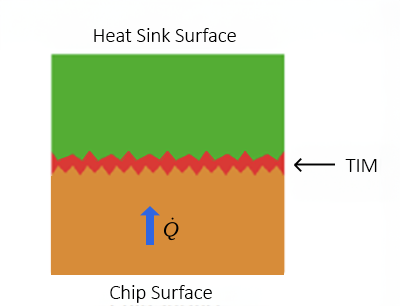
Heat makes electronics age faster. That's nothing new. The control and management of heat has always been a critical consideration in the design of printed circuit boards (PCBs) and other electronic devices. What is relatively new, however, is the dramatic increases in voltages, currents, and processing speeds demanded by burgeoning industries.
A few examples of this are:
- EV manufacture and charging
- Solar and green energy generation
- EV and energy power inversion
- Medical and wearable devices
- Energy storage and battery power control
In addition to higher processing speeds and power requirements, things just keep getting smaller and smaller! Nobody wants a wearable or medical device that weighs as much as a boat anchor, and automotive and aerospace manufacturers are always trying to shave every possible gram from their products. The need for miniaturization adds additional heat-producing factors such as:
- Tighter PCB trace spacings
- Smaller integrated circuits and processors
- Tighter spacing of PCB components
So, what can designers do? There is not much that can be done about the basic physics of power, trace and component spacing, and size that leads to the generation of this heat. The challenge is then to conduct or quickly move this heat away from its source to keep temperatures down and product service life up. This is where we introduced Thermal Pads.
We will discuss the basics of THERMAL PADS as an option in the control of heat and temperature and the extension of warranty and service life.
Strategies for Thermal Management
Most of us with home computers or laptops have experienced the long-standing and most basic form of thermal management: The fan. If you are old enough (or if your computer is at least) you are well acquainted with that annoying whirring sound switching on and off when the internals of your computer are overtaxed and need some cooling off.
Now imagine, as is in fact the case, that you need that sort of processing power and speed but in a wearable medical device such as an insulin controller. Obviously, the first designer that proposes a fan for cooling probably has moved on to another career choice. There are many methods and strategies to move and dissipate heat in smaller or more powerful devices, and one of those is the use of thermal pads.
Related Article: Choosing the Right Material for Thermal Management
Thermal pads can be used independently, or more often can be used in combination with a heat sink of some sort. When used along with a heat sink, thermal pads are used as a combination of a bonding/adhesive element as well as a thermally conductive layer between the device and the heat sink. This in-between layer is known as the thermal interface layer and materials such as gap pads are discussed as thermal interface materials (TIMs).

How Do Thermal Pads Work?
Thermal gap pads are generally soft, polymeric materials with adhesive or tacky surfaces for bonding substrate to heat sink. Unlike typical adhesives or polymer films and pads, thermal pads have the added property of being highly thermally conductive usually due to their content of thermally conductive fillers such as metal oxides and hydrates.
These conductive pads can be used independently on top of components, or more often are used in combination with a metal heat sink. They act as a thermal interface between the electronic component and the heat sink, facilitating the efficient transfer of heat away from the component. Gap pads provide adhesion and durability, and fill the microscopic gaps and imperfections present between the mating surfaces, reducing thermal resistance and enhancing heat flow.
Advantages of Thermal Pads
Thermal interface materials can be supplied as liquids, thin films, or elastomeric pads. While liquid thermal materials can be cost-effective and capable of automated high-speed dispensing, they can be messy and imprecise.
Thermal films, on the other hand, can provide better adhesion and precision of thickness but can be lacking in the higher levels of thermal transfer and do not provide resiliency in certain instances. At times, thermal gap pads can be the ideal solution, providing a flexible and resilient bonding interface of reliable thickness and consistent thermal conductivity across the area of concern. Gap pads are usually supplied in sheet or roll form as die-cut pieces and applied either manually or with automation.
Fully cured as supplied, thermal pads have the advantages of:
- Superior shelf life versus liquids
- Cleaner and consistent application
- Consistent thickness and thermal conductivity
- No need for curing time or equipment
.jpg?width=6000&height=4000&name=DSC_1569%20(1).jpg)
Related Article: 7 Advantages of Using Thermal Pads for Your PCBs
Resin Designs Thermal Gap Pads
Chase Corporation (through our Resin Designs division) has been manufacturing and supporting thermal management through gap pads for decades. A partial list of potential solutions can be seen below.
As a supplier of electronics protection polymers and coatings, Chase Corporation and Resin Designs division can help you with a comprehensive and unbiased approach to evaluating your application and process. We’ll show you how to maximize efficiency, minimize cost, and improve product reliability. Our outstanding manufacturing and technical support groups can provide your organization with reliable global supply, unmatched quality, and superior technical support.
Please contact us today to discuss your application!









